Comparison Tables of Nvidia Shield TV Pro vs Roku Ultra
While a plethora of options exist, two contenders consistently stand out: the Nvidia Shield and the Roku Ultra.
Both are known for their unique features, performance metrics, and overall user experience, choosing between them can be a daunting task. In this post, we’ll dive deep into each device, comparing them side by side on various parameters.
Related: Roku Ultra vs Apple TV 4k
From their technical specifications, gaming capabilities, user interfaces, to even my personal experience with them – by the end of this guide, you’ll be armed with all the information you need to make your decision about which device is best for you.
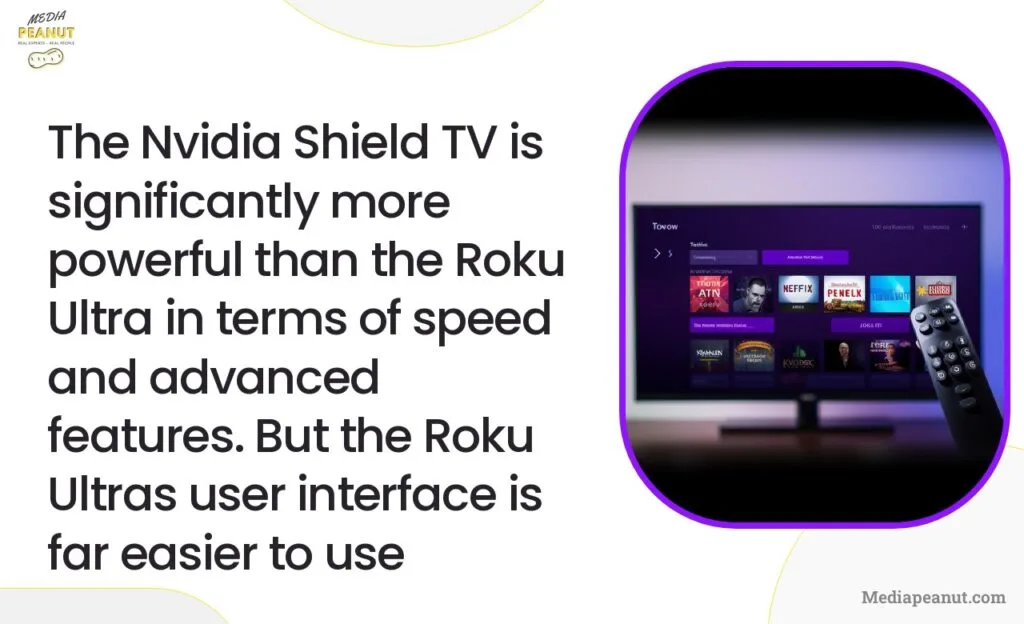
- Comparison Tables of Nvidia Shield TV Pro vs Roku Ultra
- Differences between Nvidia Shield vs Roku Ultra
- Pros and cons
- Roku Ultra vs Nvidia Shield: Deep dive analysis between the two
- Direct Comparison: Roku Ultra vs Nvidia Shield
- Use Cases and Target Audience
- My personal experience using both devices side by side
- Alternatives to the Roku Ultra & Nvidia Shield
- Which should you choose?
- FAQ
- What are the main differences between Roku Ultra and Nvidia Shield?
- Which device supports more apps and channels, Roku Ultra or Nvidia Shield?
- How does the picture quality of Roku Ultra compare with Nvidia Shield?
- Are there any significant differences in the user interfaces of Roku Ultra and Nvidia Shield?
- How does the gaming experience on Nvidia Shield compare to Roku Ultra?
Differences between Nvidia Shield vs Roku Ultra
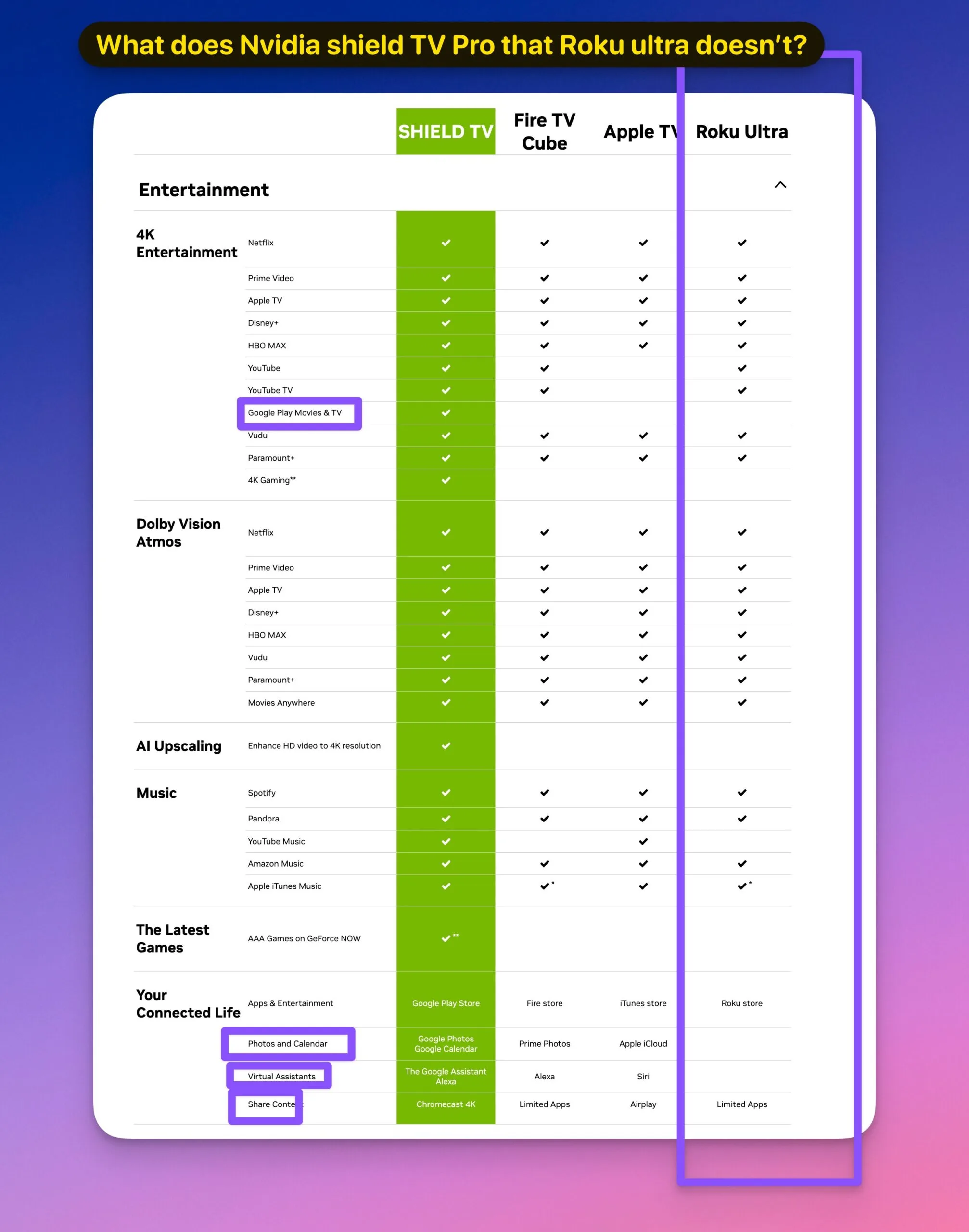
Nvidia Shield and Roku Ultra are two of the most popular streaming devices on the market today. They both offer excellent streaming capabilities, but there are some key differences between them that could influence your buying decision.
See the best things you Can Do with Nvidia Shield TV Pro
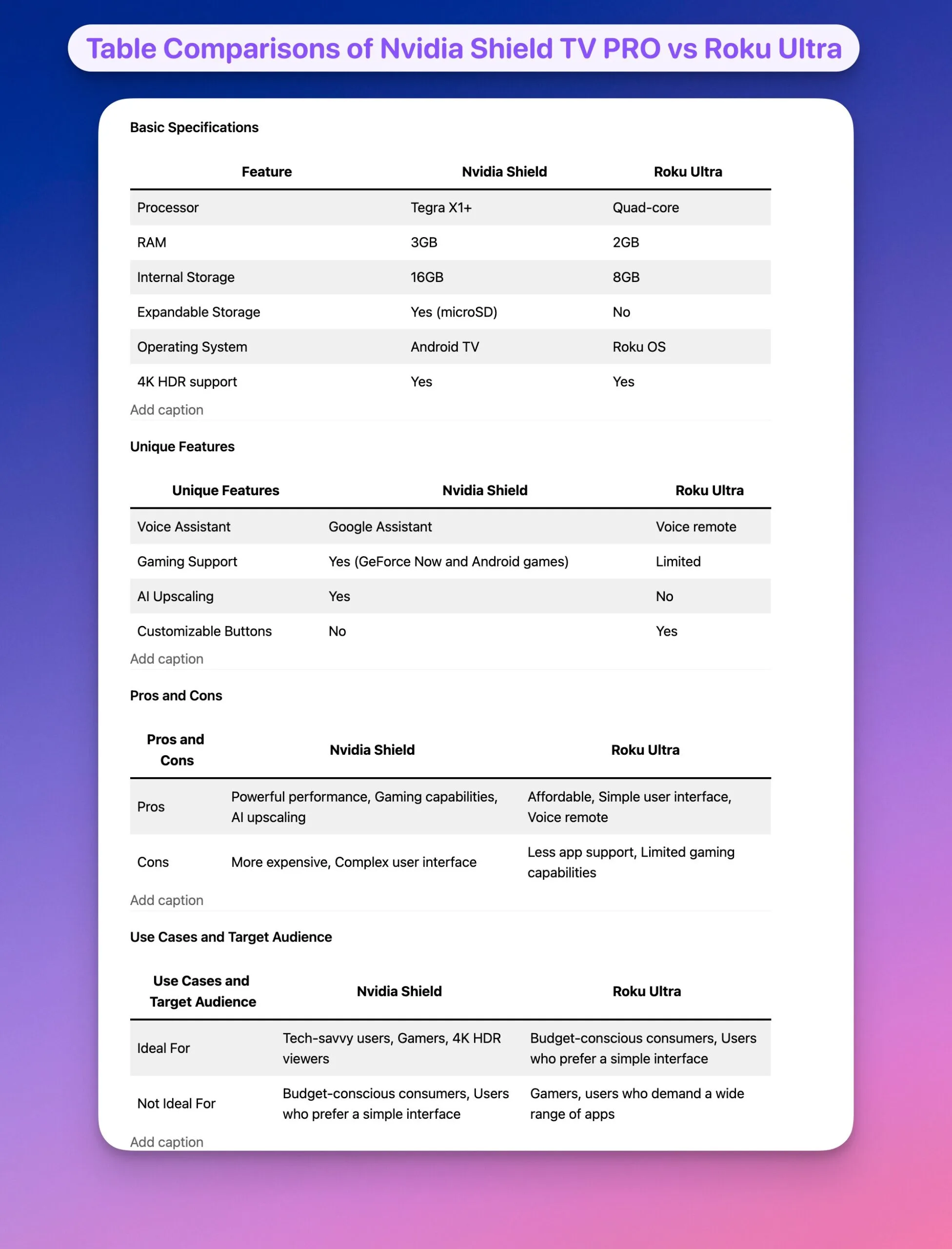
The Nvidia Shield is powered by the powerful Tegra X1+ processor, which allows it to handle 4K HDR content with ease. It also comes with 3GB of RAM and 16GB of internal storage, which can be expanded via a microSD card slot.
| Image | Title | Price | Prime | Buy |
|---|---|---|---|---|
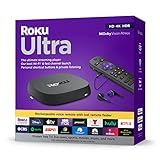 | Roku Ultra 4K | PrimeEligible | View at Amazon | |
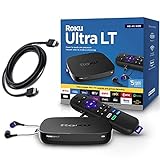 | Roku Ultra LT 4K | PrimeEligible | View at Amazon | |
 | NVIDIA SHIELD TV Pro | PrimeEligible | View at Amazon | |
 | NVIDIA SHIELD TV | PrimeEligible | View at Amazon |
The Shield runs on Android TV, which offers a wide range of apps and games. It also supports AI upscaling, which can enhance the quality of lower-resolution content.
On the other hand, the Roku Ultra is a more affordable option, but it doesn’t skimp on features. It supports 4K HDR content and comes with a quad-core processor, 2GB of RAM, and 8GB of internal storage.
Related: Roku Ultra vs Roku Ultra LT: How are they different? (Comparison Review)
The Roku Ultra runs on Roku OS, which is renowned for its simplicity and ease of use. It also includes a voice remote with buttons for TV power and volume.
Who uses the Nvidia shield:
| Use Cases and Target Audience | Nvidia Shield | Roku Ultra |
|---|---|---|
| Ideal For | Tech-savvy users, Gamers, 4K HDR viewers | Budget-conscious consumers, Users who prefer a simple interface |
| Not Ideal For | Budget-conscious consumers, Users who prefer a simple interface | Gamers, users who demand a wide range of apps |
Roku Ultra or Nvidia Shield Which is faster?
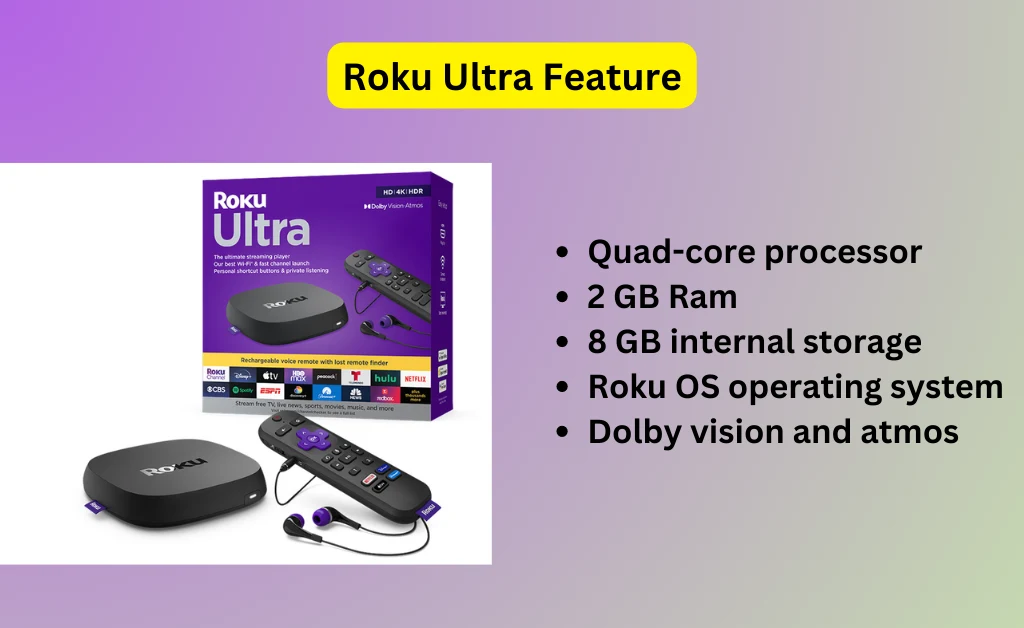
When it comes to speed, the Nvidia Shield has the edge over the Roku Ultra. Thanks to its powerful Tegra X1+ processor and 3GB of RAM, the Shield can load apps and stream content more quickly than the Roku Ultra. This results in a smoother and more responsive user experience.
Related: Roku Ultra Review: Is the Fastest Roku device worth $100+?
However, the Roku Ultra is no slouch either. Its quad-core processor and 2GB of RAM ensure that apps load quickly and streaming is smooth. While it may not be as fast as the Shield, the Roku Ultra still offers a speedy and reliable streaming experience.
| Image | Title | Price | Prime | Buy |
|---|---|---|---|---|
 | Roku Ultra 4K | PrimeEligible | View at Amazon | |
 | Roku Ultra LT 4K | PrimeEligible | View at Amazon | |
 | NVIDIA SHIELD TV Pro | PrimeEligible | View at Amazon | |
 | NVIDIA SHIELD TV | PrimeEligible | View at Amazon |
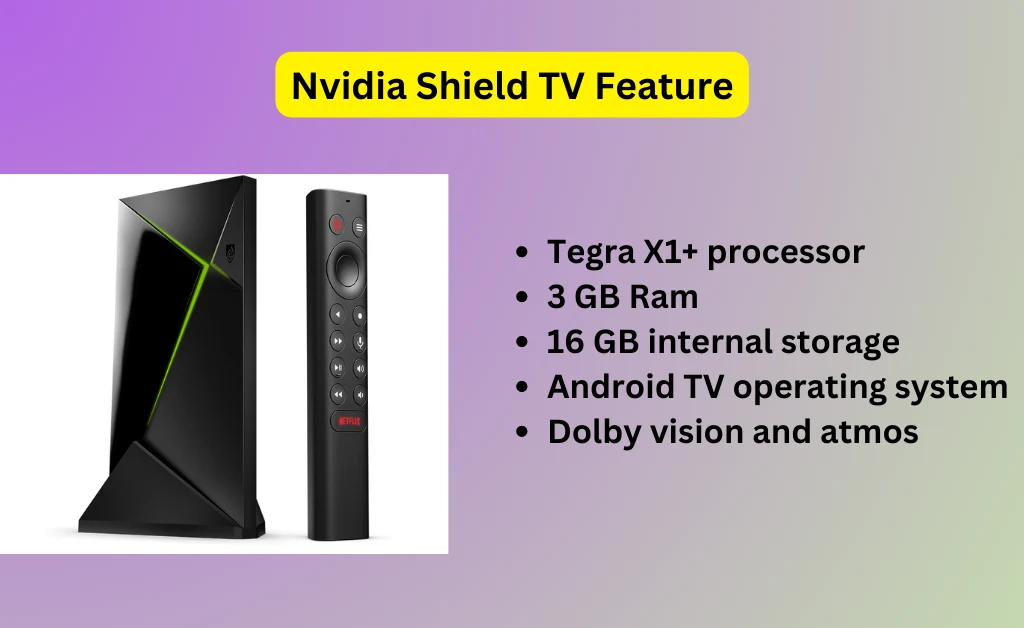
Basic Specifications
| Feature | Nvidia Shield | Roku Ultra |
|---|---|---|
| Processor | Tegra X1+ | Quad-core |
| RAM | 3GB | 2GB |
| Internal Storage | 16GB | 8GB |
| Expandable Storage | Yes (microSD) | No |
| Operating System | Android TV | Roku OS |
| 4K HDR support | Yes | Yes |
More features for advanced streaming: Nvidia Shield TV Pro
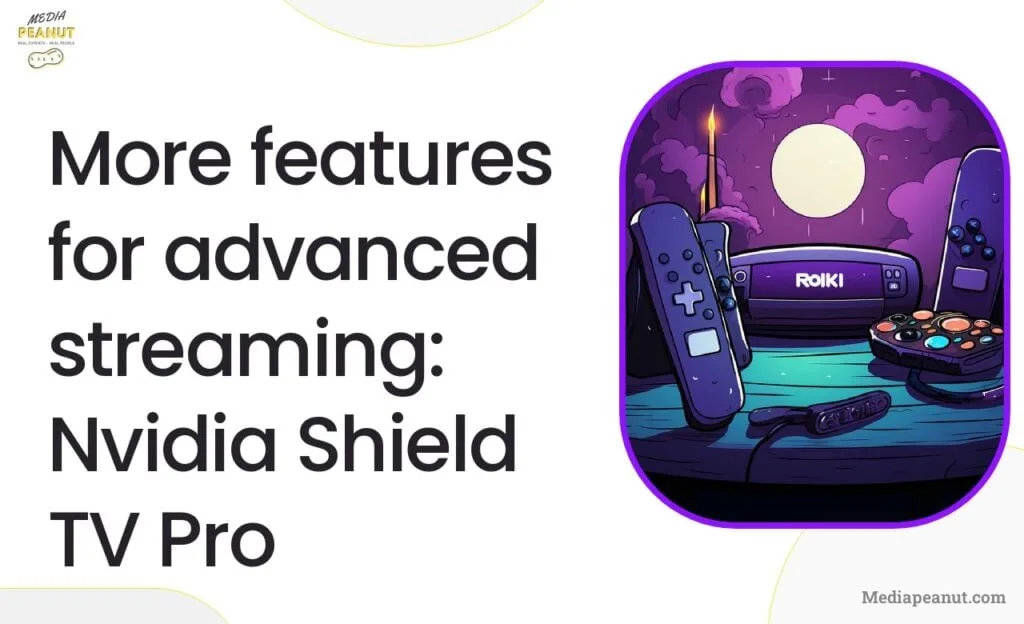
The Nvidia Shield TV Pro takes streaming to the next level with its advanced features. It supports 4K HDR content and boasts AI upscaling technology, which enhances the quality of lower-resolution content. The Shield TV Pro also has a built-in Google Assistant, allowing you to control your streaming experience using voice commands.
Unique Features
| Unique Features | Nvidia Shield | Roku Ultra |
|---|---|---|
| Voice Assistant | Google Assistant | Voice remote |
| Gaming Support | Yes (GeForce Now and Android games) | Limited |
| AI Upscaling | Yes | No |
| Customizable Buttons | No | Yes |
In addition to its streaming capabilities, the Shield TV Pro also doubles as a gaming console. It supports Nvidia’s GeForce Now cloud gaming service, as well as a wide range of Android games. This makes it a versatile device that can cater to both your streaming and gaming needs.
Related: How to get a Web Browser on Nvidia shield (10 best browsers)
Which device has the better user interface?
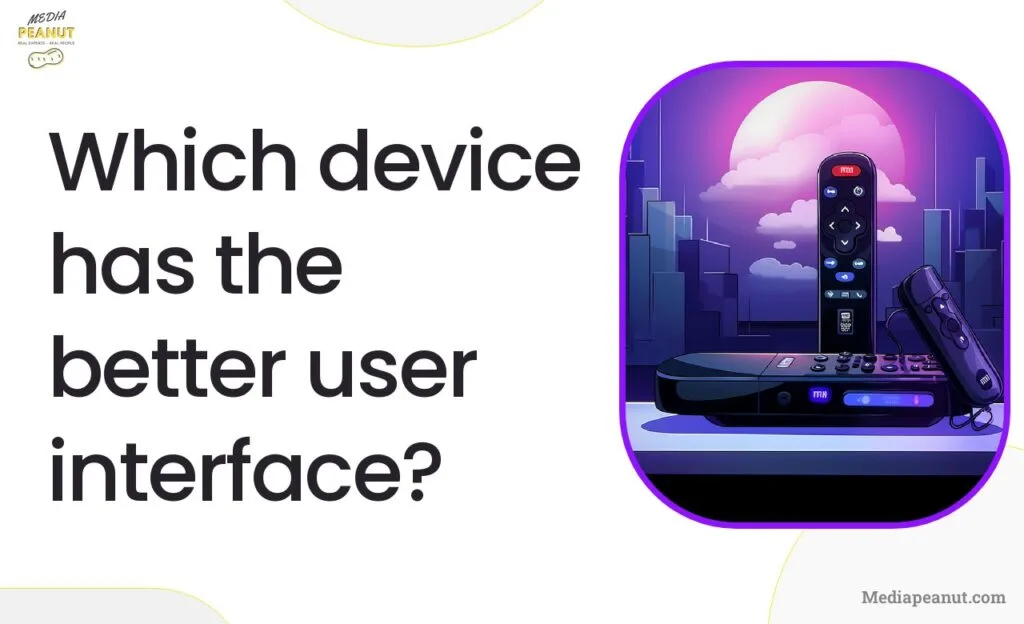
The user interface is another area where the Nvidia Shield and Roku Ultra differ. The Shield runs on Android TV, which offers a clean and intuitive interface. It also supports Google Assistant, allowing you to control your streaming experience using voice commands.
The Roku Ultra, on the other hand, uses Roku OS. This interface is renowned for its simplicity and ease of use. It’s straightforward to navigate, and the included voice remote makes it easy to search for content.
Related: How to Get a Internet Browser on Roku
While both interfaces are user-friendly, the choice between them comes down to personal preference. If you’re familiar with Android and enjoy using voice commands, you might prefer the Shield’s interface. If you prefer a simple, straightforward interface, the Roku Ultra might be the better choice.
Exclusive Features of each streaming player
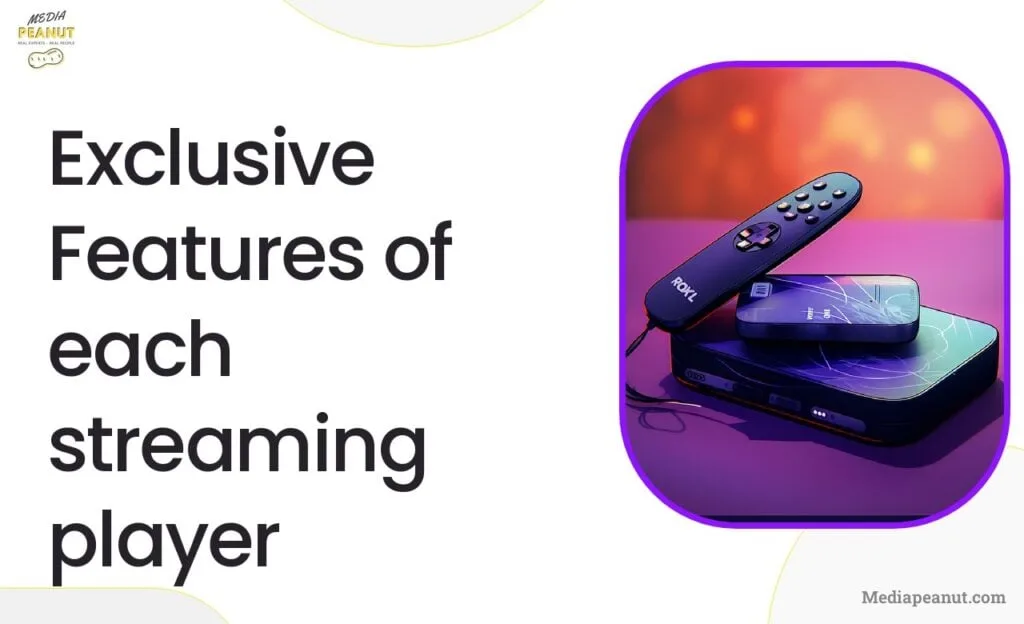
The Nvidia Shield and Roku Ultra each have their own set of exclusive features. For the Shield, one of its standout features is its gaming capabilities. It supports Nvidia’s GeForce Now cloud gaming service, as well as a wide range of Android games. This makes it a versatile device that can cater to both your streaming and gaming needs.
Also see: 9 Best Streaming Devices for Smart TVs: The Ultimate Guide
The Roku Ultra, on the other hand, stands out with its enhanced voice remote. This remote includes a headphone jack for private listening, as well as voice command capabilities. It also has two programmable buttons that you can customize to launch your favorite channels with a single press.
Which is better for gaming?
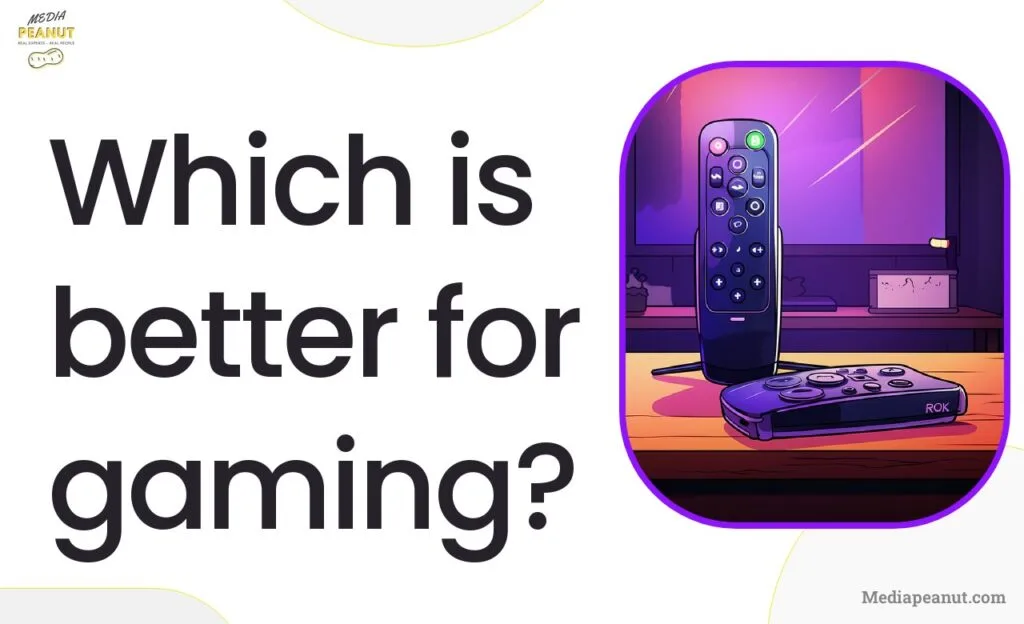
When it comes to gaming, the Nvidia Shield is the clear winner. It supports Nvidia’s GeForce Now cloud gaming service, which allows you to play a wide range of PC games on your TV. It also supports a variety of Android games, giving you plenty of options to choose from.
The Roku Ultra, on the other hand, is primarily a streaming device and doesn’t offer the same gaming capabilities as the Shield. While it does support some casual games, its selection is limited compared to the Shield.
Pros and cons
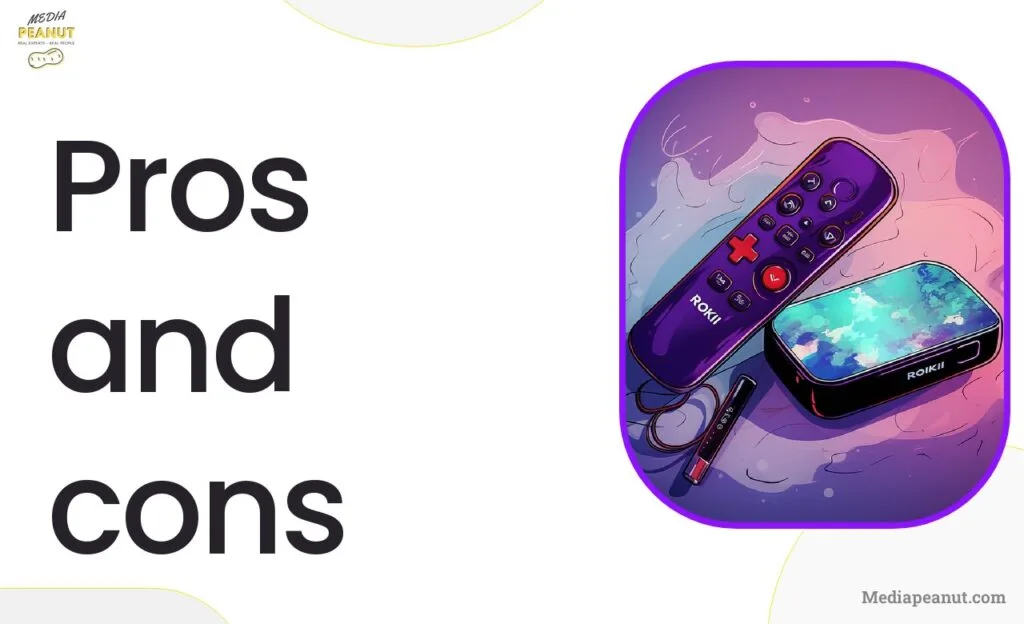
Like any device, both the Nvidia Shield and Roku Ultra have their pros and cons. The Shield’s strengths lie in its powerful performance, gaming capabilities, and AI upscaling technology. However, it is more expensive than the Roku Ultra and its user interface may not be as simple and straightforward for some users.
Pros and Cons
| Pros and Cons | Nvidia Shield | Roku Ultra |
|---|---|---|
| Pros | Powerful performance, Gaming capabilities, AI upscaling | Affordable, Simple user interface, Voice remote |
| Cons | More expensive, Complex user interface | Less app support, Limited gaming capabilities |
The Roku Ultra, on the other hand, is more affordable and offers a simple and intuitive user interface. It also includes a voice remote with a headphone jack for private listening. However, it doesn’t support as many apps as the Shield and its gaming capabilities are limited.
For a detailed breakdown of Roku, read our Roku Ultra vs Ultra LT.
Roku Ultra vs Nvidia Shield: Deep dive analysis between the two
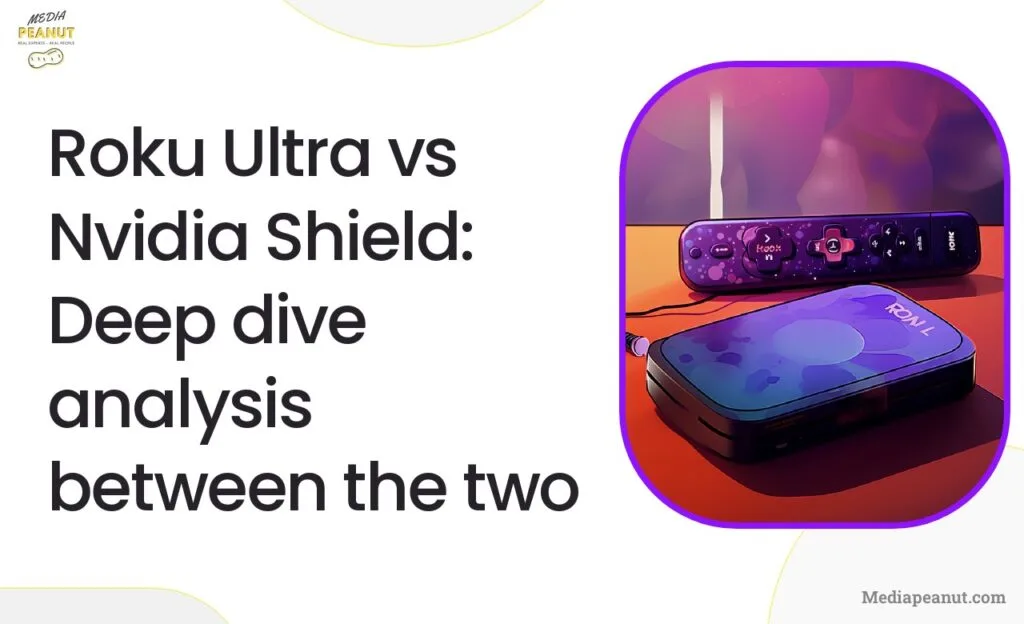
When comparing the Roku Ultra and Nvidia Shield, it’s clear that both devices offer excellent streaming capabilities. However, there are some key differences between them that could influence your buying decision.
Detailed Review of Roku Ultra:
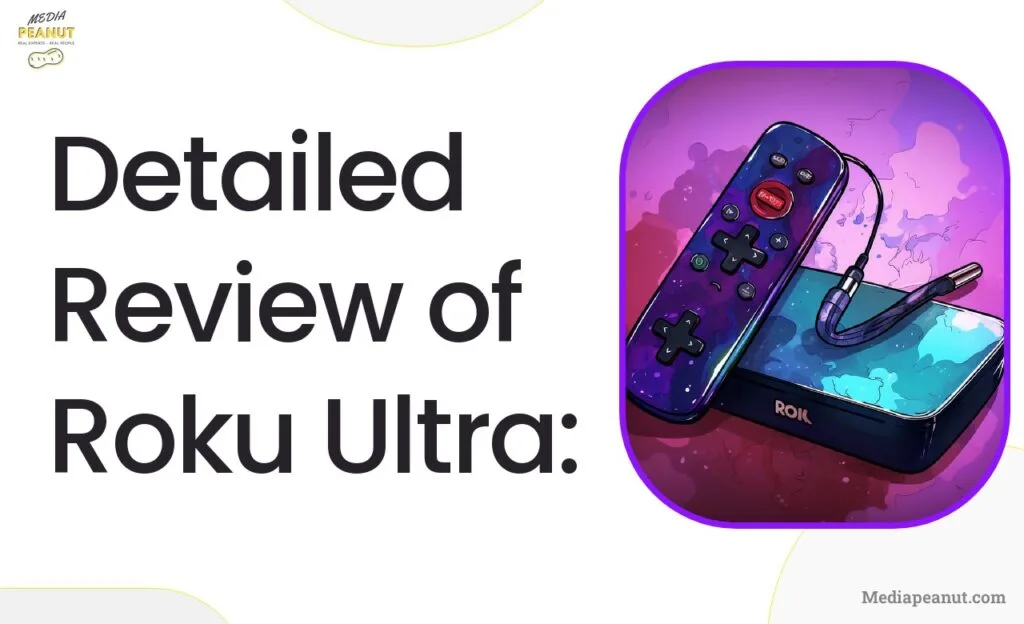
Features and specifications

The Roku Ultra supports 4K HDR content and comes with a quad-core volume, as well as a headphone jack for private listening. The Roku Ultra runs on Roku OS, which is renowned for its simplicity and ease of use.
Discover Roku’s diverse features in the [Roku streaming stick review].
Performance and user experience
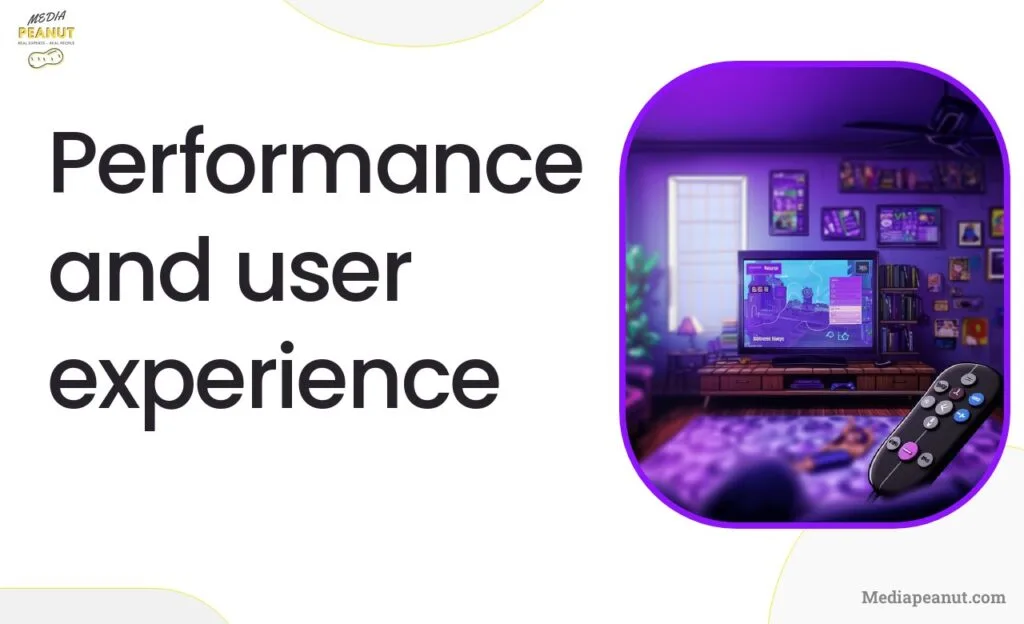
In terms of performance, the Roku Ultra is a reliable and speedy streaming device. Apps load quickly, and streaming is smooth. The user interface is simple and straightforward, making it easy to navigate and find content. The included voice remote also enhances the user experience, allowing you to search for content using voice commands.
Get insights on Roku’s performance in the Roku Ultra vs Apple TV 4k.
Pricing and value for money

The Roku Ultra is more affordable than the Nvidia Shield, making it a great option if you’re on a budget. Despite its lower price, it doesn’t skimp on features and offers a reliable and speedy streaming experience.
For a cost analysis, check out what does roku cost per month subscription fees.
Pros and cons
The Roku Ultra’s strengths lie in its affordability, simple user interface, and reliable performance. It also includes a voice remote with a headphone jack for private listening. However, it doesn’t support as many apps as the Shield and its gaming capabilities are limited.
Detailed Review of Nvidia Shield:
Features and specifications
The Nvidia Shield is powered by the powerful Tegra X1+ processor and comes with 3GB of RAM and 16GB of internal storage. It supports 4K HDR content and boasts AI upscaling technology, which enhances the quality of lower-resolution content. The Shield also doubles as a gaming console, supporting Nvidia’s GeForce Now cloud gaming service and a wide range of Android games.
Performance and user experience
Thanks to its powerful hardware, the Nvidia Shield offers a smooth and responsive user experience. Apps load quickly, and streaming is seamless. The user interface, while more complex than the Roku Ultra’s, is still intuitive and easy to navigate.
Pricing and value for money
The Nvidia Shield is more expensive than the Roku Ultra, but it offers a wealth of features that justify its higher price. Its powerful performance, gaming capabilities, and AI upscaling technology make it a versatile and high-quality streaming device.
Pros and cons
The Nvidia Shield’s strengths lie in its powerful performance, gaming capabilities, and AI upscaling technology. However, it is more expensive than the Roku Ultra and its user interface may not be as simple and straightforward for some users.
Direct Comparison: Roku Ultra vs Nvidia Shield
Comparing features
When comparing the features of the Roku Ultra and Nvidia Shield, it’s clear that the Shield offers more. It supports 4K HDR content, boasts AI upscaling technology, and doubles as a gaming console. The Roku Ultra, while more affordable, doesn’t offer the same range of features.
Comparing performance
In terms of performance, the Nvidia Shield is faster than the Roku Ultra thanks to its powerful Tegra X1+ processor and 3GB of RAM. However, the Roku Ultra still offers a reliable and speedy streaming experience.
Comparing user experience
The user experience on both devices is generally positive, but they offer different interfaces. The Shield’s interface is more complex but offers more features, while the Roku Ultra’s interface is simpler and more straightforward.
Comparing price and value
The Nvidia Shield is more expensive than the Roku Ultra, but it offers a wealth of features that justify its higher price. The Roku Ultra, while more affordable, offers a reliable and speedy streaming experience and a simpler user interface.
Also see: For a breakdown of Roku’s cost-effectiveness, check Roku vs Chromecast with Google TV.
Use Cases and Target Audience
The Nvidia Shield is best suited for tech-savvy users who want a powerful streaming device that can also handle gaming. It’s also a good choice for those who want to enjoy 4K HDR content and make use of AI upscaling technology.
The Roku Ultra, on the other hand, is a great option for those who want a simple and straightforward streaming device. It’s also more affordable than the Shield, making it a good choice for those on a budget.
Related: To understand who benefits most from Roku, see Do I need a Roku device with my Smart TV?.
My personal experience using both devices side by side
Having used both the Nvidia Shield and Roku Ultra side by side, I can say that both devices offer excellent streaming capabilities. The Shield’s powerful performance and gaming capabilities make it a versatile and high-quality streaming device. On the other hand, the Roku Ultra’s simplicity and ease of use make it a great option for those who want a straightforward streaming experience.
Alternatives to the Roku Ultra & Nvidia Shield
If neither the Roku Ultra nor the Nvidia Shield seems like the right fit for you, there are other streaming devices to consider. The Amazon Fire TV Stick 4K is a more affordable option that still supports 4K HDR content. The Apple TV 4K is another high-end option that offers a wealth of features, including access to the Apple TV+ streaming service.
Looking for alternatives? Discover Streaming devices that are similar to roku.
Which should you choose?
The choice between the Nvidia Shield and Roku Ultra ultimately comes down to your personal needs and preferences. If you want a powerful streaming device that can also handle gaming, the Shield is the way to go. If you prefer a simpler and more straightforward streaming experience, the Roku Ultra is a great choice.
FAQ
What are the main differences between Roku Ultra and Nvidia Shield?
The main differences between the Roku Ultra and Nvidia Shield lie in their features and performance. The Shield is more powerful and offers more features, including gaming capabilities and AI upscaling technology. The Roku Ultra, while more affordable, offers a simpler and more straightforward streaming experience.
Which device supports more apps and channels, Roku Ultra or Nvidia Shield?
The Nvidia Shield supports more apps and channels than the Roku Ultra. This is because it runs on Android TV, which has a wider range of apps and games available. However, the Roku Ultra still supports a wide range of popular streaming services, including Netflix, Amazon Prime Video, and Hulu.
How does the picture quality of Roku Ultra compare with Nvidia Shield?
Both the Roku Ultra and Nvidia Shield support 4K HDR content, so they both offer excellent picture quality. However, the Shield has the added advantage of AI upscaling technology, which can enhance the quality of lower-resolution content.
Are there any significant differences in the user interfaces of Roku Ultra and Nvidia Shield?
Yes, there are significant differences in the user interfaces of the Roku Ultra and Nvidia Shield. The Shield runs on Android TV, which offers a clean and intuitive interface. The Roku Ultra, on the other hand, uses Roku OS, which is renowned for its simplicity and ease of use.
How does the gaming experience on Nvidia Shield compare to Roku Ultra?
The Nvidia Shield offers a far superior gaming experience compared to the Roku Ultra. It supports Nvidia’s GeForce Now cloud gaming service, as well as a wide range of Android games. The Roku Ultra, on the other hand, is primarily a streaming device and doesn’t offer the same gaming capabilities as the Shield.


